Articles citing this paper
The fate of mercury in Arctic terrestrial and aquatic ecosystems, a review
Thomas A. Douglas A AA , Lisa L. Loseto B , Robie W. Macdonald C , Peter Outridge D , Aurélien Dommergue E , Alexandre Poulain F , Marc Amyot G , Tamar Barkay H , Torunn Berg I , John Chételat J , Philippe Constant K , Marlene Evans L , Christophe Ferrari M , Nikolaus Gantner N , Matthew S. Johnson O , Jane Kirk P , Niels Kroer Q , Catherine Larose R , David Lean S , Torkel Gissel Nielsen T , Laurier Poissant U , Sigurd Rognerud V , Henrik Skov Q W , Søren Sørensen X , Feiuye Wang Y , Simon Wilson Z and Christian M. Zdanowicz D
+ Author Affiliations
- Author Affiliations
A US Army Cold Regions Research and Engineering Laboratory, PO Box 35170, Fort Wainwright, AK 99709, USA.
B Fisheries and Oceans Canada, Freshwater Institute, 501 University Crescent, Winnipeg MB, R3T 2N6, Canada. Email: lisa.loseto@dfo-mpo.gc.ca
C Department of Fisheries and Oceans, Institute of Ocean Sciences, PO Box 6000, Sidney, BC, V8L 4B2, Canada. Email: robie.macdonald@dfo-mpo.gc.ca
D Natural Resources Canada, Geological Survey of Canada, 601 Booth Sreet Ottawa, ON, K1A 0E8, Canada. Email: outridge@nrcan.gc.ca; czdanowi@nrcan.gc.ca
E UJF – Grenoble 1/CNRS, Laboratoire de Glaciologie et Géophysique de l’Environnement (LGGE) UMR 5183, BP 53, F-38041 Grenoble, France. Email: dommergue@lgge.obs.ujf-grenoble.fr
F Biology Department, University of Ottawa, 30 Marie Curie Street, Ottawa, ON, K1N 6N5, Canada. Email: apoulain@uottawa.ca
G GRIL, Département de Sciences Biologiques, Université de Montréal, CP 6128, Succ. Centre-Ville, Pavillon Marie-Victorin, Montréal, QC, H3C 3J7, Canada. Email: m.amyot@umontreal.ca
H Rutgers University, Department of Biochemistry and Microbiology, 76 Lipman Drive, New Brunswick, NJ 08901-8525, USA. Email: barkay@aesop.rutgers.edu
I Norwegian University of Science and Technology, Department of Chemistry, Gløshaugen, NO-7491, Trondheim, Norway. Email: torunn@chem.ntnu.no
J National Wildlife Research Centre, Environment Canada, Ottawa, ON, K1A 0H3, Canada. Email: john.chetelat@ec.gc.ca
K Centre INRS-Institut Armand-Frappier, 531 Boulevard des Prairies, Laval, QC, H7V 1B7, Canada. Email: philippe.constant@iaf.inrs.ca
L Environment Canada, National Water Research Institute, 11 Innovation Boulevard, Saskatoon, SK, S7N 3H5, Canada. Email: marlene.evans@ec.gc.ca
M CNRS-Laboratoire de Glaciologie et Géophysique de l’Environnement, 54, rue Molière, BP 96, Grenoble, Saint-Martin d’Hères cedex, F-38402 France. Email: ferrari@lgge.obs.ujf-grenoble.fr
N Department of Geography University of Victoria, Victoria, BC, V8W 3R4, Canada. Email: gantnern@uvic.ca
O Department of Chemistry University of Copenhagen, Universitetsparken 5, DK-2100 Copenhagen Ø, Denmark. Email: msj@kiku.dk
P Aquatic Ecosystem Protection Research Division, Environment Canada, Burlington, ON, L7R 4A6, Canada. Email: jane.kirk@ec.gc.ca
Q Department of Environmental Science, Aarhus University Frederiksborgvej 399, Post Box 358, DK-4000 Roskilde, Denmark. Email: nk@dmu.dk; hsk@dmu.dk
R Environmental Microbial Genomics Group, Ecole Centrale de Lyon, Université de Lyon, 36 Avenue Guy de Collongue, F-69134 Ecully, France. Email: catherine.larose@ec-lyon.fr
S PO Box 309, Apsley, ON, K0L 1A0, Canada. Email: drslean@gmail.com
T National Institute of Aquatic Resources, DTU Aqua Section for Ocean Ecology and Climate Technical University of Denmark, DTU Kavalergården 6, DK-2920 Charlottenlund, Denmark. Email: tgin@aqua.dtu.dk
U Environnement Canada, Section de la Recherche sur les Écosystèmes Fluviaux, 105 rue McGill, Montréal, QC, H2Y 2E7, Canada. Email: laurier.poissant@ec.gc.ca
V Norwegian Institute for Water Research, Branch Office East, Sandvikaveien 59, NO-2312 Ottestad, Norway.
W University of Southern Denmark, Institute of Chemical Engineering and Biotechnology and Environmental Technology, Niels Bohrs Allé 1, DK-5230 Odense M, Denmark.
X Department of Microbiology, University of Copenhagen, Sølvgade 83H, DK-1307 Copenhagen, Denmark. Email: sjs@bi.ku.dk
Y Center for Earth Observation Science Department of Environment and Geography & Department of Chemistry, University of Manitoba Winnipeg, MB, R3T 2N2, Canada. Email: wangf@ms.umanitoba.ca
Z Arctic Monitoring and Assessment Programme (AMAP) Secretariat, Gaustadalléen 21, N-0349 Oslo, Norway. Email: s.wilson@inter.nl.net
AA Corresponding author. Email: thomas.a.douglas@usace.army.mil
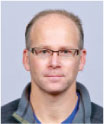
Dr Thomas A. Douglas has worked as a geochemist at the U.S. Army’s Cold Regions Research and Engineering Laboratory in Fairbanks, Alaska since 2001. He uses geochemical tracers to investigate environmental processes occurring in the snow pack, on sea ice, and in watersheds containing permafrost. Recent projects have focussed on the interactions between atmospheric chemical compounds, like mercury, and the snow surface and measurements of the chemical composition of permafrost ice features. He also has ongoing projects focussed on predicting the response of permafrost to climate warming and the potential release of carbon from permafrost soils.
|
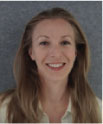
Dr Lisa L. Loseto is an Arctic marine ecologist with Fisheries and Oceans Canada in Winnipeg. Her research focuses on characterising beluga health, habitat use, diet and contaminant exposure in context with surrounding ecosystem drivers. Her research programs are carried out in close partnership with northern communities and co-management boards to address ecosystem health and resource management questions. She uses biomarkers such as fatty acids to define ecosystem structure and connectivity from which to construct a baseline food web and consider responses to stressors or impacts such as climate change, contaminants and industrial activity.
|
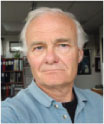
Dr Robie Macdonald is a geochemical oceanographer with Fisheries and Oceans Canada specialising in ocean pathways. His interests include the organic carbon cycle, the hydrological cycle, climate change and contaminant pathways in the Arctic and Pacific Oceans. He directs interdisciplinary programs to study the environmental pathways of contaminants, including their delivery, transport and elimination from aquatic systems. He determines the behaviour of contaminants in the context of natural systems bringing to bear such tools as water-mass analysis, transient and steady state tracers, stable isotope analyses (oxygen, carbon and lead), the determination of particle fluxes and sedimentation rates, multivariate statistics and modelling.
|
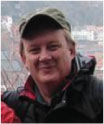
Peter Outridge is a biogeochemist working on trace metals in the environment. His particular research interests are sedimentary metal chemistry, lead isotopes as tracers, mercury in polar regions, and the impacts of climate change on environmental metal dynamics and fate. He is co-chair of the Mercury Experts Group for the Arctic Monitoring and Assessment Programme, an inter-governmental agency concerned with contaminants in the Arctic.
|
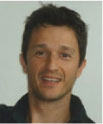
Dr A. Dommergue has worked as a chemist at the Lab of Glaciology in Grenoble, France. He is also a teacher at the Université Joseph Fourier – Grenoble 1 since 2006. He studies the fate of mercury in polar snowpacks but he is also involved in retrieving the past atmospheric patterns of mercury using snow and firn air archives. He is also involved in the atmospheric monitoring program (GMOS Global Mercury Observation System) and he is in charge of two monitoring sites in Antarctica and a third one in the Indian Ocean (Amsterdam Island).
|
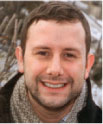
Dr Alexandre Poulain’s research interests lie at the intersection of biogeochemistry, molecular biology and microbiology, using combined field and lab-based approaches. He is particularly interested in unravelling complex biogeochemical transformations at the interfaces of water, ice, snow, soil and air, and understanding the role of microbes in these processes. His laboratory develops and uses molecular biology and bacterial tools to track the mobility and toxicity of contaminants in the environment and to evaluate how environmental stressors affect microbial communities. The primary goal of his work is to provide data to improve models predicting the fate and toxicity of contaminants in the environment. He has been involved in remote, Northern and Arctic research for 9 years.
|
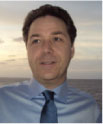
Dr Marc Amyot is full professor and chair of the department of biological sciences at Université de Montréal, Montreal, Canada. He has worked on mercury cycling in Arctic aquatic systems since 1995. His laboratory has studied the biological and photochemical redox transformations of Hg in water and snow. More recently, he has conducted studies on thaw ponds as sites of Hg methylation in the Eastern Canadian Arctic, and on the importance of photodemethylation of methylmercury in these ponds. He has also investigated the trophic transfer of mercury in Arctic food webs in the changing North.
|
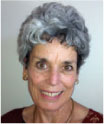
Dr Tamar Barkay, a professor at Rutgers University, NJ, since 1999, has studied the microbiology of the mercury cycle for over 35 years. Her lab uses microbiological, environmental, and molecular tools to study the mechanisms by which microbes transform mercury and to define their role in the speciation and distribution of mercury in various environments. On-going projects examine the potential contribution of mercury reduction by Arctic bacteria to the formation of elemental mercury in Arctic environments, pathways of methylmercury formation in Northern wetland ecosystems and how these are affected by global warming and mercury biogeochemistry in Yellowstone National Park.
|
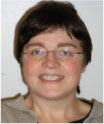
Prof Torunn Berg has been a professor at the Norwegian University of Science and Technology since 2006. She was a Ph.D. student, scientist and senior scientist at the Norwegian Institute for Air Research (NILU) from 1988 to 2009. She is responsible for the Norwegian mercury speciation measurements at the Zeppelin station as well as flux measurements at Ny-Ålesund, Svalbard. Her interest is also related to trace metals in precipitation-air and biomonitor mosses.
|
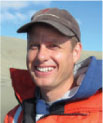
Dr John Chételat is an aquatic ecologist that studies the fate of mercury in freshwater ecosystems. His research focuses on how environmental, biological and ecological processes affect the uptake and biomagnification of mercury in aquatic food webs. Currently, Dr Chételat is a Research Scientist with Environment Canada at the National Wildlife Research Centre in Ottawa, Canada.
|

Dr Philippe Constant did his Ph.D. (2004–08) under the supervision of Dr Richard Villemur (INRS-Institut Armand-Frappier; INRS-IAF) and Dr Laurier Poissant (Environment Canada) studying the biogeochemical processes of mercury and molecular hydrogen in temperate and subarctic ecosystems. After a postdoctoral fellow (2008–11) in the research group of Dr Ralf Conrad (Max Plank Institute for Terrestrial Microbiology), he joined the INRS-IAF as an assistant professor. He is currently investigating the interactions between soil microorganisms scavenging climate relevant atmospheric trace gases (e.g. H2, CO) and those catalyzing other globally important biogeochemical processes in soil, such as carbon and nitrogen turnover.
|
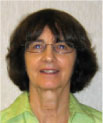
Marlene Evans is a Research Scientist at Environment Canada’s National Hydrology Research Centre in Saskatoon. In northern Canada, she is investigating contaminant trends in Great Slave Lake burbot and lake trout; sea-run char at two coastal communities; and contributing to landlocked char and ringed seal studies. In the Prairie Provinces, she is investigating mercury biomagnification rates in warm-water food webs (pike) and leading the temporal chapter assessing Canada-wide trends in mercury deposition in lakes and concentrations in biota. She is contributing to studies around Alberta’s oil sands, focussing on mercury trends in fish and metals and PAHs in sediments.
|
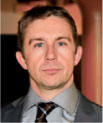
Christophe Ferrari has been Professor at University of Grenoble (France) since 2004 and a researcher at the Laboratoire de Glaciologie et Géophysique de l’Environnement (CNRS/UJF) since 1996 as assistant Professor. He has been since 2003 junior member of the Institut Universitaire de France (IUF). He has been a chemist working on heavy metals in the environment and especially mercury in polar and alpine regions. His main focus has been to better understand methylation pathways in pristine regions and also to better understand mercury pathways from atmospheric deposition to contamination of polar ecosystems.
|
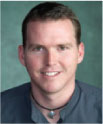
Dr Nikolaus Gantner is an Ecotoxicologist currently appointed as NSERC Banting Fellow and Adjunct Assistant Professor at the Department of Geography at the University of Victoria, Victoria, BC, Canada. Nikolaus’ research focuses on the transfer of contaminants through aquatic food webs. Past research included the ecological characterisation of Arctic lake food webs using stable isotopes and parallel analysis of mercury and mercury isotopes, with the goal to better understand the transfer of mercury and potential for isotope fractionation in food webs. In his ongoing research, Nikolaus incorporates knowledge from multiple disciplines to address challenging environmental issues using a collaborative approach.
|
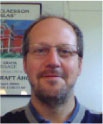
Matthew S. Johnson is a Senior Lecturer at the Department of Chemistry at the University of Copenhagen. He teaches courses on environmental chemistry, physical and quantum chemistry, and scientific writing. His main research interest is atmospheric chemistry, including kinetics and spectroscopy, and stable isotopes in atmospheric trace gases. He is a co-author of more than 70 articles in peer-reviewed journals. He has invented and patented a method for efficient emissions control and improving building energy efficiency. He has worked as a researcher for Honeywell and Medtronic and has research collaborations with groups around the world, including Ford Motor Company and the Tokyo Institute of Technology.
|
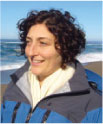
Jane Kirk is an Environment Canada Research Scientist at the Canada Centre for Inland Waters in Burlington, Ontario, Canada. She completed her Ph.D. in Environmental Biology and Ecology in 2009 from the University of Alberta. Jane’s research examines the natural biogeochemical cycling of elements in the environment and human disruptions to these cycles. Jane is currently examining the transport and fate of mercury in Canadian temperate and Arctic ecosystems to try to understand why concentrations of methyl mercury, the toxic and bioaccumulative form of mercury, are so high in freshwater fishes and marine mammals.
|
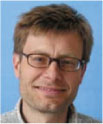
Dr Niels Kroer is Head of the Department of Environmental Sciences at Aarhus University, Denmark. His research is focussed on the activity, functional diversity and evolution of natural microbial communities. Specifically, his expertise includes bacterial nutrient cycling, measurements of in situ microbial activity, environmental factors affecting the rate of horizontal exchange of genetic material between bacteria, and bacterial adaptation to environmental stressors such as mercury. Recent projects have focussed on microbial communities in snow and the role of bacteria in the Arctic Hg cycle.
|
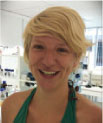
Dr Catherine Larose is currently working at the Microbial Environmental Genomics Group at the University of Lyon in France. Her environmental genomics (mostly metagenomics) research involves exploring the functional and structural relationships between the environmental genetic resources within Arctic snow ecosystems. High throughput techniques, such as microarrays and pyrosequencing, are used to produce data that supports relevant hypotheses. Much of her current microbial ecology research is on the perturbations of microbial communities and the adaptation of microorganisms to xenobiotic compounds such as mercury.
|
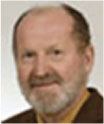
Dr David Lean is a retired Professor of Ecotoxicology in the Department of Biology at the University of Ottawa. His research is focussed on the effects of toxic substances on living systems including processes that control the chemical transport, fate, persistence and biological accumulation of toxic substances.
|
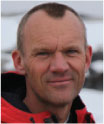
After receiving his Ph.D. in 1990 in biological oceanography Torkel Gissel Nielsen was employed at the Danish Institute for Fisheries Research. From 1991 he was employed as a marine biologist at National Environmental Research Institute (NERI), department for Marine Ecology and Microbiology, since 1994 as Senior Research Scientist and since 1999 as Research Professor. During the employment at NERI he established extensive research in Arctic biological oceanography with the overall focus on the structure of the arctic pelagic food web and climate impacts on the pelagic food web. Since 2009 he has held a professorship in environmental biological oceanography at National Institute of Aquatic Resources, Technical University of Denmark, working primarily with Arctic biological oceanography leading a group of six M.Sc. and five Ph.D. students.
|
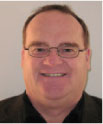
Dr Laurier Poissant is a retired Senior Scientific Researcher who worked at Environment Canada from 1991 to 2012. His specialty is in investigating the atmospheric processes of contaminants and their interaction with the environment. He has performed research on air-borne mercury and its interaction with northern, aquatic, land and plant environments, on pesticide use in agricultural environments, on the impact of greenhouse gases on St Lawrence and Arctic ecosystems and on contaminant fugacity (water, snow, air, soil, vegetation).
|
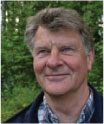
Sigurd Rognerud is a Senior Scientist at the Norwegian Institute for Water Research (NIVA). His interest is in limnology, especially with regard to contamination of mercury, other heavy metals, and persistent organic pollutants in freshwater ecosystems. Recent projects have focussed on contamination of mercury and other metals in aquatic ecosystems around a large copper–nickel smelter in Subartic Kola Peninsula, Russia. He has also been working with changes in mercury contamination in fish populations following clear cutting of catchments and temporal trends of mercury in lake sediments and fish in Norway.
|
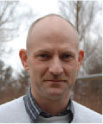
Since 1993, Prof Henrik Skov has worked as Principal Scientist at the National Environmental Research Institute, now called Department of Environmental Science, Aarhus University, Denmark. He is an atmospheric chemist and for the last 15 years he has been working with the fate of long-range transported pollution to the Arctic. He is responsible for the monitoring station, Station Nord in north-east Greenland. During the last 3 years, he has also been involved in studies of short lived climate forcers. Furthermore, he is Adjunct Professor at the Institute of Chemical Engineering and Biotechnology and Environmental Technology, University of Southern Denmark.
|
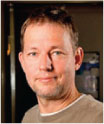
Professor Søren Sørensen has been the team leader of the Molecular Microbial Ecology Group at the University of Copenhagen since 2008. The main objective of the group’s studies is to evaluate the extent of genetic flow within the natural communities and the responses to environmental perturbations. Molecular techniques such as Q-PCR and pyrosequencing are used to investigate resilience and resistance of community structure in soil. The group has been pioneering in the environmental application of specific whole cell biosensors and other single cell technologies with a focus on flow cytometric analysis. He has co-authored more than 200 scientific papers in international peer reviewed journals, books and presentations at international meetings.
|

Dr Feiyue Wang is Professor of Environmental Chemistry and Biogeochemistry at the University of Manitoba, Winnipeg, Canada. An aquatic chemist by training, Dr Wang’s research interests extend from molecular-level interactions of metal ions across environmental interfaces to global-scale interactions between chemical contamination and climate change. His recent research has centred on mercury as a global contaminant and as a tracer for other contaminants, and on sea ice geochemistry. Dr Wang leads the Sea–ice Environmental Research Facility (SERF), the first experimental sea ice facility in Canada.
|
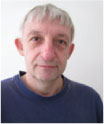
Dr Simon J. Wilson is Deputy Executive Secretary of the Arctic Monitoring and Assessment Programme (AMAP) Secretariat, in Oslo, Norway. Based in the Netherlands, he has a background in environmental sciences and trace metal chemistry. His work areas include AMAP data management and communication and outreach, and in particular the development of AMAP science-based information products for policy-makers. His most recent activities involve work on assessments of mercury in the Arctic, and Arctic cryospheric change, and he is currently coordinating project work under and AMAP/UNEP international collaboration to produce an updated global inventory of anthropogenic emissions of mercury to air.
|

Dr Christian Zdanowicz is a glaciologist with the Geological Survey of Canada in Ottawa, where he has worked since 1999. He specialises in the study of climate and atmospheric changes in polar and alpine regions through the analysis of glacier cores. Over the past decade, he has conducted extensive work on the long-range transport and deposition of atmospheric contaminants in the Canadian Arctic and the Yukon Territory. His most recent work, conducted under the auspices of the 2007–08 International Polar Year, focussed on the cycling of atmospheric mercury in glaciated catchments of Baffin Island.
|
Environmental Chemistry 9(4) 321-355 https://doi.org/10.1071/EN11140
Submitted: 12 November 2011 Accepted: 5 May 2012 Published: 20 August 2012
102 articles found in
Crossref database.
Chemical cycling and deposition of atmospheric mercury in polar regions: review of recent measurements and comparison with models
Angot Hélène,
Dastoor Ashu,
De Simone Francesco,
Gårdfeldt Katarina,
Gencarelli Christian N.,
Hedgecock Ian M.,
Langer Sarka,
Magand Olivier,
Mastromonaco Michelle N.,
Nordstrøm Claus,
Pfaffhuber Katrine A.,
Pirrone Nicola,
Ryjkov Andrei,
Selin Noelle E.,
Skov Henrik,
Song Shaojie,
Sprovieri Francesca,
Steffen Alexandra,
Toyota Kenjiro,
Travnikov Oleg,
Yang Xin, Dommergue Aurélien
Atmospheric Chemistry and Physics. 2016 16(16). p.10735
Deposition and Reduction of Oxidized Mercury on the Ice Surface: Quantum-Chemical Study and Implication of Mercury Activities in the Arctic
Vogelsong Logan,
Fuentes Jose D., Asaduzzaman Abu
The Journal of Physical Chemistry C. 2023 127(5). p.2657
Atmospheric mercury concentrations observed at ground-based monitoring sites globally distributed in the framework of the GMOS network
Sprovieri Francesca,
Pirrone Nicola,
Bencardino Mariantonia,
D'Amore Francesco,
Carbone Francesco,
Cinnirella Sergio,
Mannarino Valentino,
Landis Matthew,
Ebinghaus Ralf,
Weigelt Andreas,
Brunke Ernst-Günther,
Labuschagne Casper,
Martin Lynwill,
Munthe John,
Wängberg Ingvar,
Artaxo Paulo,
Morais Fernando,
Barbosa Henrique de Melo Jorge,
Brito Joel,
Cairns Warren,
Barbante Carlo,
Diéguez María del Carmen,
Garcia Patricia Elizabeth,
Dommergue Aurélien,
Angot Helene,
Magand Olivier,
Skov Henrik,
Horvat Milena,
Kotnik Jože,
Read Katie Alana,
Neves Luis Mendes,
Gawlik Bernd Manfred,
Sena Fabrizio,
Mashyanov Nikolay,
Obolkin Vladimir,
Wip Dennis,
Feng Xin Bin,
Zhang Hui,
Fu Xuewu,
Ramachandran Ramesh,
Cossa Daniel,
Knoery Joël,
Marusczak Nicolas,
Nerentorp Michelle, Norstrom Claus
Atmospheric Chemistry and Physics. 2016 16(18). p.11915
Overview: Integrative and Comprehensive Understanding on Polar Environments (iCUPE) – concept and initial results
Petäjä Tuukka,
Duplissy Ella-Maria,
Tabakova Ksenia,
Schmale Julia,
Altstädter Barbara,
Ancellet Gerard,
Arshinov Mikhail,
Balin Yurii,
Baltensperger Urs,
Bange Jens,
Beamish Alison,
Belan Boris,
Berchet Antoine,
Bossi Rossana,
Cairns Warren R. L.,
Ebinghaus Ralf,
El Haddad Imad,
Ferreira-Araujo Beatriz,
Franck Anna,
Huang Lin,
Hyvärinen Antti,
Humbert Angelika,
Kalogridis Athina-Cerise,
Konstantinov Pavel,
Lampert Astrid,
MacLeod Matthew,
Magand Olivier,
Mahura Alexander,
Marelle Louis,
Masloboev Vladimir,
Moisseev Dmitri,
Moschos Vaios,
Neckel Niklas,
Onishi Tatsuo,
Osterwalder Stefan,
Ovaska Aino,
Paasonen Pauli,
Panchenko Mikhail,
Pankratov Fidel,
Pernov Jakob B.,
Platis Andreas,
Popovicheva Olga,
Raut Jean-Christophe,
Riandet Aurélie,
Sachs Torsten,
Salvatori Rosamaria,
Salzano Roberto,
Schröder Ludwig,
Schön Martin,
Shevchenko Vladimir,
Skov Henrik,
Sonke Jeroen E.,
Spolaor Andrea,
Stathopoulos Vasileios K.,
Strahlendorff Mikko,
Thomas Jennie L.,
Vitale Vito,
Vratolis Sterios,
Barbante Carlo,
Chabrillat Sabine,
Dommergue Aurélien,
Eleftheriadis Konstantinos,
Heilimo Jyri,
Law Kathy S.,
Massling Andreas,
Noe Steffen M.,
Paris Jean-Daniel,
Prévôt André S. H.,
Riipinen Ilona,
Wehner Birgit,
Xie Zhiyong, Lappalainen Hanna K.
Atmospheric Chemistry and Physics. 2020 20(14). p.8551
Mercury and trace metal wet deposition across five stations in Alaska: controlling factors, spatial patterns, and source regions
Pearson Christopher,
Howard Dean,
Moore Christopher, Obrist Daniel
Atmospheric Chemistry and Physics. 2019 19(10). p.6913
Mercury in freshwater ecosystems of the Canadian Arctic: Recent advances on its cycling and fate
Chételat John,
Amyot Marc,
Arp Paul,
Blais Jules M.,
Depew David,
Emmerton Craig A.,
Evans Marlene,
Gamberg Mary,
Gantner Nikolaus,
Girard Catherine,
Graydon Jennifer,
Kirk Jane,
Lean David,
Lehnherr Igor,
Muir Derek,
Nasr Mina,
J. Poulain Alexandre,
Power Michael,
Roach Pat,
Stern Gary,
Swanson Heidi, van der Velden Shannon
Science of The Total Environment. 2015 509-510 p.41
Methylmercury biogeochemistry: a review with special reference to Arctic aquatic ecosystems
Lehnherr Igor
Environmental Reviews. 2014 22(3). p.229
Mercury in the Arctic tundra snowpack: temporal and spatial concentration patterns and trace gas exchanges
Agnan Yannick,
Douglas Thomas A.,
Helmig Detlev,
Hueber Jacques, Obrist Daniel
The Cryosphere. 2018 12(6). p.1939
Insight into the relationships between total suspended particles and mercury in meltwater in a typical glacierized basin in the inland Tibetan Plateau
Sun Xuejun,
Zhang Qianggong,
Li Mingyue,
Wang Jie,
Lu Zijian,
Guo Junming,
Kang Shichang, Shi Jianbo
Journal of Hazardous Materials. 2023 452 p.131250
Effects of sulfate-reducing bacteria on methylmercury at the sediment–water interface
Zeng Lingxia,
Luo Guangjun,
He Tianrong,
Guo Yanna, Qian Xiaoli
Journal of Environmental Sciences. 2016 46 p.214
Mercury biomagnification in food webs of the northeastern Chukchi Sea, Alaskan Arctic
Fox Austin L.,
Trefry John H.,
Trocine Robert P.,
Dunton Kenneth H.,
Lasorsa Brenda K.,
Konar Brenda,
Ashjian Carin J., Cooper Lee W.
Deep Sea Research Part II: Topical Studies in Oceanography. 2017 144 p.63
Mercury in the Canadian Arctic Terrestrial Environment: An Update
Gamberg Mary,
Chételat John,
Poulain Alexandre J.,
Zdanowicz Christian, Zheng Jiancheng
Science of The Total Environment. 2015 509-510 p.28
Insights from mercury stable isotopes on terrestrial–atmosphere exchange of Hg(0) in the Arctic tundra
Jiskra Martin,
Sonke Jeroen E.,
Agnan Yannick,
Helmig Detlev, Obrist Daniel
Biogeosciences. 2019 16(20). p.4051
Mercury export from glacierized Alaskan watersheds as influenced by bedrock geology, watershed processes, and atmospheric deposition
Nagorski Sonia A.,
Vermilyea Andrew W., Lamborg Carl H.
Geochimica et Cosmochimica Acta. 2021 304 p.32
Tundra uptake of atmospheric elemental mercury drives Arctic mercury pollution
Obrist Daniel,
Agnan Yannick,
Jiskra Martin,
Olson Christine L.,
Colegrove Dominique P.,
Hueber Jacques,
Moore Christopher W.,
Sonke Jeroen E., Helmig Detlev
Nature. 2017 547(7662). p.201
Interactions between mercury and phytoplankton: Speciation, bioavailability, and internal handling
Le Faucheur Séverine,
Campbell Peter G.C.,
Fortin Claude, Slaveykova Vera I.
Environmental Toxicology and Chemistry. 2014 33(6). p.1211
Small mammals as a bioindicator of mercury in a biodiversity hotspot – The Hengduan Mountains, China
Ma Yanju,
Chen Shuyin,
Shang Lihai,
Zhang Wei,
Yan Yizhu,
Huang Zhiwen,
Hu Yiming,
Liang Jianchao,
Ji Shengnan,
Zhao Zhiping,
Zhou Zhixin, Hu Huijian
Ecological Indicators. 2023 154 p.110892
Mercury-Modulated Immune Responses in Arctic Barnacle Goslings (Branta leucopsis) upon a Viral-Like Immune Challenge
Han Biyao,
van den Berg Hans,
Loonen Maarten J.J.E.,
Mateo Rafael, van den Brink Nico W.
Environmental Science & Technology. 2023 57(13). p.5337
Development of Mercury Analysis by NanoSIMS for the Localization of Mercury–Selenium Particles in Whale Liver
Subirana Maria Angels,
Paton Lhiam,
Hall James,
Brownlow Andrew,
Krupp Eva M.,
Feldmann Jörg, Schaumlöffel Dirk
Analytical Chemistry. 2021 93(37). p.12733
Springtime boundary layer O3 and GEM depletion at Toolik Lake, Alaska
Van Dam Brie,
Helmig Detlev,
Burkhart John F.,
Obrist Daniel, Oltmans Samuel J.
Journal of Geophysical Research: Atmospheres. 2013 118(8). p.3382
Mercury Physicochemical and Biogeochemical Transformation in the Atmosphere and at Atmospheric Interfaces: A Review and Future Directions
Ariya Parisa A.,
Amyot Marc,
Dastoor Ashu,
Deeds Daniel,
Feinberg Aryeh,
Kos Gregor,
Poulain Alexandre,
Ryjkov Andrei,
Semeniuk Kirill,
Subir M., Toyota Kenjiro
Chemical Reviews. 2015 115(10). p.3760
Impacts of Extreme Weather on Mercury Uptake and Storage in Subtropical Forest Ecosystems
Yuan Wei,
Wang Xun,
Lin Che‐Jen,
Zhang Hui,
Feng Xinbin, Lu Zhiyun
Journal of Geophysical Research: Biogeosciences. 2022 127(1).
Microbead beating extraction of avian eggs for polycyclic aromatic compounds
Xia Zhe,
Idowu Ifeoluwa,
Halldorson Thor,
Lucas Amica-Mariae,
Stein Claire,
Kaur Manpreet,
Tomy Thane,
Marvin Chris,
Thomas Philippe J.,
Hebert Craig E.,
Smith Reyd A.,
Dwyer-Samuel Frederic,
Provencher Jennifer F., Tomy Gregg T.
Chemosphere. 2023 335 p.139059
Changing Arctic snow cover: A review of recent developments and assessment of future needs for observations, modelling, and impacts
Bokhorst Stef,
Pedersen Stine Højlund,
Brucker Ludovic,
Anisimov Oleg,
Bjerke Jarle W.,
Brown Ross D.,
Ehrich Dorothee,
Essery Richard L. H.,
Heilig Achim,
Ingvander Susanne,
Johansson Cecilia,
Johansson Margareta,
Jónsdóttir Ingibjörg Svala,
Inga Niila,
Luojus Kari,
Macelloni Giovanni,
Mariash Heather,
McLennan Donald,
Rosqvist Gunhild Ninis,
Sato Atsushi,
Savela Hannele,
Schneebeli Martin,
Sokolov Aleksandr,
Sokratov Sergey A.,
Terzago Silvia,
Vikhamar-Schuler Dagrun,
Williamson Scott,
Qiu Yubao, Callaghan Terry V.
Ambio. 2016 45(5). p.516
Arctic atmospheric mercury: Sources and changes
Dastoor Ashu,
Wilson Simon J.,
Travnikov Oleg,
Ryjkov Andrei,
Angot Hélène,
Christensen Jesper H.,
Steenhuisen Frits, Muntean Marilena
Science of The Total Environment. 2022 839 p.156213
Mercury in the marine environment of the Canadian Arctic: Review of recent findings
Braune Birgit,
Chételat John,
Amyot Marc,
Brown Tanya,
Clayden Meredith,
Evans Marlene,
Fisk Aaron,
Gaden Ashley,
Girard Catherine,
Hare Alex,
Kirk Jane,
Lehnherr Igor,
Letcher Robert,
Loseto Lisa,
Macdonald Robie,
Mann Erin,
McMeans Bailey,
Muir Derek,
O'Driscoll Nelson,
Poulain Alexandre,
Reimer Ken, Stern Gary
Science of The Total Environment. 2015 509-510 p.67
Arctic plasmidome analysis reveals distinct relationships among associated antimicrobial resistance genes and virulence genes along anthropogenic gradients
Makowska‐Zawierucha Nicoletta,
Trzebny Artur,
Zawierucha Krzysztof,
Manthapuri Vineeth,
Bradley James A., Pruden Amy
Global Change Biology. 2024 30(5).
Mercury transformations in algae, plants, and animals: The occurrence, mechanisms, and gaps
Li Shouying,
Li Zhuoran,
Wu Mengjie,
Zhou Yang,
Tang Wenli, Zhong Huan
Science of The Total Environment. 2024 911 p.168690
A decade with Environmental Chemistry
Francesconi Kevin
Environmental Chemistry. 2020 17(5). p.353
Distant drivers or local signals: Where do mercury trends in western Arctic belugas originate?
Loseto L.L.,
Stern G.A., Macdonald R.W.
Science of The Total Environment. 2015 509-510 p.226
The assessment of bore-hole water quality of Kakamega County, Kenya
Christine Adika A.,
Kibet Joshua K.,
Kiprop Ambsrose K., Were Munyendo L.
Applied Water Science. 2018 8(1).
Accumulation, storage and release of atmospheric mercury in a glaciated Arctic catchment, Baffin Island, Canada
Zdanowicz Christian,
Krümmel Eva M.,
Lean David,
Poulain Alexandre J.,
Yumvihoze Emmanuel,
Chen JiuBin, Hintelmann Holger
Geochimica et Cosmochimica Acta. 2013 107 p.316
Arctic plants take up mercury vapour
Shotyk William
Nature. 2017 547(7662). p.167
A new reconstruction of atmospheric gaseous elemental mercury trend over the last 60 years from Greenland firn records
Dommergue A.,
Martinerie P.,
Courteaud J.,
Witrant E., Etheridge D.M.
Atmospheric Environment. 2016 136 p.156
Ecosystem Mercury Recovery and Health Benefit Under the Minamata Convention in a Changing Climate
Wu Qingru,
Zhang Yanxu,
Li Ping,
Fu Xuewu,
Zhang Qianggong,
Wang Xun,
Chen Long,
Wang Shuxiao,
Wang Feiyue, Feng Xinbin
Reviews of Environmental Contamination and Toxicology. 2022 260(1).
Assessment of Mercury Concentrations and Fluxes Deposited from the Atmosphere on the Territory of the Yamal-Nenets Autonomous Area
Eyrikh Stella,
Shol Liliya, Shinkaruk Elena
Atmosphere. 2021 13(1). p.37
Mercury in tundra vegetation of Alaska: Spatial and temporal dynamics and stable isotope patterns
Olson Christine L.,
Jiskra Martin,
Sonke Jeroen E., Obrist Daniel
Science of The Total Environment. 2019 660 p.1502
Mammals and Birds as Bioindicators of Trace Element Contaminations in Terrestrial Environments (2019)
Kalisińska Elżbieta,
Łanocha-Arendarczyk Natalia, Kosik-Bogacka Danuta I.
Photoreducible Mercury Loss from Arctic Snow Is Influenced by Temperature and Snow Age
Mann Erin A.,
Mallory Mark L.,
Ziegler Susan E.,
Avery Trevor S.,
Tordon Rob, O’Driscoll Nelson J.
Environmental Science & Technology. 2015 49(20). p.12120
Ionic Strength Differentially Affects the Bioavailability of Neutral and Negatively Charged Inorganic Hg Complexes
Stenzler Benjamin,
Hinz Aaron,
Ruuskanen Matti, Poulain Alexandre J.
Environmental Science & Technology. 2017 51(17). p.9653
Mercury contamination in aquatic ecosystems under a changing environment: Implications for the Three Gorges Reservoir
Wang Feiyue, Zhang JinZhong
Chinese Science Bulletin. 2013 58(2). p.141
The Influence of Weather Anomalies on Mercury Cycling in the Marine Coastal Zone of the Southern Baltic—Future Perspective
Bełdowska Magdalena
Water, Air, & Soil Pollution. 2015 226(1).
Arctic methylmercury cycling
Jonsson Sofi,
Mastromonaco Michelle Nerentorp,
Wang Feiyue,
Bravo Andrea G.,
Cairns Warren R.L.,
Chételat John,
Douglas Thomas A.,
Lescord Gretchen,
Ukonmaanaho Liisa, Heimbürger-Boavida Lars-Eric
Science of The Total Environment. 2022 850 p.157445
Mercury and marine birds in Arctic Canada: effects, current trends, and why we should be paying closer attention
Provencher J.F.,
Mallory M.L.,
Braune B.M.,
Forbes M.R., Gilchrist H.G.
Environmental Reviews. 2014 22(3). p.244
Pre-industrial and recent (1970–2010) atmospheric deposition of sulfate and mercury in snow on southern Baffin Island, Arctic Canada
Zdanowicz Christian,
Kruemmel Eva,
Lean David,
Poulain Alexandre,
Kinnard Christophe,
Yumvihoze Emmanuel,
Chen JiuBin, Hintelmann Holger
Science of The Total Environment. 2015 509-510 p.104
Mercury toxicity to Eisenia fetida in three different soils
Mahbub Khandaker Rayhan,
Krishnan Kannan,
Naidu Ravi, Megharaj Mallavarapu
Environmental Science and Pollution Research. 2017 24(2). p.1261
Handbook of Mineral Elements in Food (2015)
Pavón José Manuel Cano,
de Torres Amparo García,
Rojas Fuensanta Sánchez,
Ojeda Catalina Bosch, Alonso Elisa Vereda
Atmospheric mercury over sea ice during the OASIS-2009 campaign
Steffen A.,
Bottenheim J.,
Cole A.,
Douglas T. A.,
Ebinghaus R.,
Friess U.,
Netcheva S.,
Nghiem S.,
Sihler H., Staebler R.
Atmospheric Chemistry and Physics. 2013 13(14). p.7007
Ecological drivers of mercury concentrations in fish species in subsistence harvests from Kotzebue Sound, Alaska
Cyr Andrew P.,
López J. Andrés,
Wooller Matthew J.,
Whiting Alex,
Gerlach Robert, O'Hara Todd
Environmental Research. 2019 177 p.108622
Mercury in Barents Sea fish in the Arctic polar night: Species and spatial comparison
Gopakumar Anjali,
Giebichenstein Julia,
Raskhozheva Evgeniia, Borgå Katrine
Marine Pollution Bulletin. 2021 169 p.112501
Effect of diet, location and sampling year on bioaccumulation of mercury, selenium and cadmium in pelagic feeding seabirds in Svalbard
Øverjordet Ida Beathe,
Gabrielsen Geir Wing,
Berg Torunn,
Ruus Anders,
Evenset Anita,
Borgå Katrine,
Christensen Guttorm,
Lierhagen Syverin, Jenssen Bjørn Munro
Chemosphere. 2015 122 p.14
Ratio of Methylmercury to Dissolved Organic Carbon in Water Explains Methylmercury Bioaccumulation Across a Latitudinal Gradient from North-Temperate to Arctic Lakes
Chételat John,
Richardson Murray C.,
MacMillan Gwyneth A.,
Amyot Marc, Poulain Alexandre J.
Environmental Science & Technology. 2018 52(1). p.79
Risk assessment for seafood consumers exposed to mercury and other trace elements in fish from Long Island, New York, USA
Ye Xiayan,
Lee Cheng-Shiuan,
Shipley Oliver N.,
Frisk Michael G., Fisher Nicholas S.
Marine Pollution Bulletin. 2022 176 p.113442
Mercury uptake within an ice algal community during the spring bloom in first‐year Arctic sea ice
Burt Alexis,
Wang Feiyue,
Pućko Monika,
Mundy Christopher‐John,
Gosselin Michel,
Philippe Benoît,
Poulin Michel,
Tremblay Jean‐Éric, Stern Gary A.
Journal of Geophysical Research: Oceans. 2013 118(9). p.4746
Recent advances in the study of mercury methylation in aquatic systems
Paranjape Avnee R.,
Hall Britt D., Smol John
FACETS. 2017 2(1). p.85
Updated Global and Oceanic Mercury Budgets for the United Nations Global Mercury Assessment 2018
Outridge P. M.,
Mason R. P.,
Wang F.,
Guerrero S., Heimbürger-Boavida L. E.
Environmental Science & Technology. 2018
Mercury Isotopes Reveal Atmospheric Gaseous Mercury Deposition Directly to the Arctic Coastal Snowpack
Douglas Thomas A., Blum Joel D.
Environmental Science & Technology Letters. 2019 6(4). p.235
Environmental and biological factors are joint drivers of mercury biomagnification in subarctic lake food webs along a climate and productivity gradient
Kozak Natalia,
Ahonen Salla A.,
Keva Ossi,
Østbye Kjartan,
Taipale Sami J.,
Hayden Brian, Kahilainen Kimmo K.
Science of The Total Environment. 2021 779 p.146261
Mercury distribution and variation on a high-elevation mountain glacier on the northern boundary of the Tibetan Plateau
Huang Jie,
Kang Shichang,
Guo Junming,
Sillanpää Mika,
Zhang Qianggong,
Qin Xiang,
Du Wentao, Tripathee Lekhendra
Atmospheric Environment. 2014 96 p.27
Mercury and other trace metals in the seasonal snowpack across the subarctic taiga-tundra ecotone, Northwest Territories, Canada
Zdanowicz C.,
Zheng J.,
Klimenko E., Outridge P.M.
Applied Geochemistry. 2017 82 p.63
Elevated Mercury Deposition, Accumulation, and Migration in a Karst Forest
Du Hu,
Wang Xun,
Yuan Wei,
Wu Fei,
Jia Longyu,
Liu Nantao,
Lin Che-Jen,
Gan Jiang,
Zeng Fuping,
Wang Kelin, Feng Xinbin
Environmental Science & Technology. 2023 57(45). p.17490
Mercury biogeochemistry: Paradigm shifts, outstanding issues and research needs
Sonke Jeroen E.,
Heimbürger Lars-Eric, Dommergue Aurélien
Comptes Rendus. Géoscience. 2013 345(5-6). p.213
Mercury methylation by anaerobic microorganisms: A review
Ma Ming,
Du Hongxia, Wang Dingyong
Critical Reviews in Environmental Science and Technology. 2019 49(20). p.1893
Binding strength of mercury (II) to different dissolved organic matter: The roles of DOM properties and sources
Wang Yuqin,
Liu Jiang,
Liem-Nguyen Van,
Tian Shanyi,
Zhang Siqi,
Wang Dingyong, Jiang Tao
Science of The Total Environment. 2022 807 p.150979
Updated trends for atmospheric mercury in the Arctic: 1995–2018
MacSween Katrina,
Stupple Geoff,
Aas Wenche,
Kyllönen Katriina,
Pfaffhuber Katrine Aspmo,
Skov Henrik,
Steffen Alexandra,
Berg Torunn, Mastromonaco Michelle Nerentorp
Science of The Total Environment. 2022 837 p.155802
The microbial mercury link in oligotrophic lakes: Bioaccumulation by picocyanobacteria in natural gradients of dissolved organic matter
Soto Cárdenas Carolina,
Queimaliños Claudia,
Ribeiro Guevara Sergio,
Gerea Marina, Diéguez María C.
Chemosphere. 2019 230 p.360
Structural, energetic and vibrational properties of oxidized mercury in the gas and aqueous phases
Amin Sibgha,
Asif Tabeen,
Khan Marwa,
Usinowicz Edward,
Mitra Debashree, Asaduzzaman Abu
Computational and Theoretical Chemistry. 2021 1198 p.113186
Seasonal dietary shift to zooplankton influences stable isotope ratios and total mercury concentrations in Arctic charr (Salvelinus alpinus (L.))
Kahilainen K. K.,
Thomas S. M.,
Keva O.,
Hayden B.,
Knudsen R.,
Eloranta A. P.,
Tuohiluoto K.,
Amundsen P.-A.,
Malinen T., Järvinen A.
Hydrobiologia. 2016 783(1). p.47
Background concentrations Hg in lakes Khanty-Mansi Autonomous Area, Russia
Zakharchenko A.V.,
Tigeev A.A.,
Kokoreva J.,
Khasanov S.,
Maidyrova A., Ignateva S.
E3S Web of Conferences. 2023 420 p.09013
Arctic source for elevated atmospheric mercury (Hg0) in the western Bering Sea in the summer of 2013
Kalinchuk V.V.,
Mishukov V.F., Astakhov A.S.
Journal of Environmental Sciences. 2018 68 p.114
Mercury in Hydrobionts and Their Habitat in Grønfjorden, West Spitsbergen, in Early Springtime
Lebedeva N. V.,
Zimina O. L.,
Fateev N. N.,
Nikulina A. L.,
Berchenko I. V., Meshcheryakov N. I.
Geochemistry International. 2018 56(4). p.332
Corn (Zea mays L.): A low methylmercury staple cereal source and an important biospheric sink of atmospheric mercury, and health risk assessment
Sun Guangyi,
Feng Xinbin,
Yin Runsheng,
Zhao Huifang,
Zhang Leiming,
Sommar Jonas,
Li Zhonggen, Zhang Hua
Environment International. 2019 131 p.104971
Hepatic trace element concentrations of breeding female common eiders across a latitudinal gradient in the eastern Canadian Arctic
Mallory Conor D.,
Gilchrist H. Grant,
Robertson Gregory J.,
Provencher Jennifer F.,
Braune Birgit M.,
Forbes Mark R., Mallory Mark L.
Marine Pollution Bulletin. 2017 124(1). p.252
A Pulse of Mercury and Major Ions in Snowmelt Runoff from a Small Arctic Alaska Watershed
Douglas Thomas A.,
Sturm Matthew,
Blum Joel D.,
Polashenski Christopher,
Stuefer Svetlana,
Hiemstra Christopher,
Steffen Alexandra,
Filhol Simon, Prevost Romain
Environmental Science & Technology. 2017 51(19). p.11145
Interactions between Snow Chemistry, Mercury Inputs and Microbial Population Dynamics in an Arctic Snowpack
Larose Catherine,
Prestat Emmanuel,
Cecillon Sébastien,
Berger Sibel,
Malandain Cédric,
Lyon Delina,
Ferrari Christophe,
Schneider Dominique,
Dommergue Aurélien,
Vogel Timothy M., Bourtzis Kostas
PLoS ONE. 2013 8(11). p.e79972
Salinity and redox conditions affect the methyl mercury formation in sediment of Suaeda heteroptera wetlands of Liaoning province, Northeast China
Li Hang,
Zheng Dongmei,
Yang Jisong,
Wu Chenghao,
Zhang Shiwei,
Li Huiying, Ma Huanchi
Marine Pollution Bulletin. 2019 142 p.537
Quantum Chemical Investigation of Snow–Mercury Interactions and Their Implication of Mercury Deposition in the Arctic
Ali Emaan,
Patel Nandini,
Patel Shrina, Asaduzzaman Abu
The Journal of Physical Chemistry A. 2023 127(11). p.2554
Atmospheric Hg Emissions from Preindustrial Gold and Silver Extraction in the Americas: A Reevaluation from Lake-Sediment Archives
Engstrom Daniel R.,
Fitzgerald William F.,
Cooke Colin A.,
Lamborg Carl H.,
Drevnick Paul E.,
Swain Edward B.,
Balogh Steven J., Balcom Prentiss H.
Environmental Science & Technology. 2014 48(12). p.6533
Evidence for Mass-Independent Fractionation of Mercury Isotopes by Microbial Activities Linked to Geographically and Temporally Varying Climatic Conditions in Arctic and Subarctic Lakes
Jackson Togwell A.
Geomicrobiology Journal. 2015 32(9). p.799
Melting Himalayas and mercury export: Results of continuous observations from the Rongbuk Glacier on Mt. Everest and future insights
Sun Xuejun,
Zhang Qianggong,
Zhang Guoshuai,
Li Mingyue,
Li Shengnan,
Guo Junming,
Dong Huike,
Zhou Yunqiao,
Kang Shichang,
Wang Xiaoping, Shi Jianbo
Water Research. 2022 218 p.118474
Mercury toxicity to terrestrial biota
Mahbub Khandaker Rayhan,
Krishnan Kannan,
Naidu Ravi,
Andrews Stuart, Megharaj Mallavarapu
Ecological Indicators. 2017 74 p.451
Mercury in the sediments of freshwater lakes in Ny-Ålesund, Arctic
Gopikrishna V. G.,
Kannan V. M.,
Binish M. B.,
Abdul Shukkur M.,
Krishnan K. P., Mohan Mahesh
Environmental Monitoring and Assessment. 2020 192(8).
Mercury photochemistry in snow and implications for Arctic ecosystems
Mann Erin,
Ziegler Susan,
Mallory Mark, O’Driscoll Nelson
Environmental Reviews. 2014 22(4). p.331
Mercury associated neurochemical response in Arctic barnacle goslings (Branta leucopsis)
van den Brink Nico W.,
Scheiber Isabella B.R.,
de Jong Margje E.,
Braun Anna,
Arini Adeline,
Basu Niladri,
van den Berg Hans,
Komdeur Jan, Loonen Maarten J.J.E.
Science of The Total Environment. 2018 624 p.1052
Atmospheric mercury speciation and mercury in snow over time at Alert, Canada
Steffen A.,
Bottenheim J.,
Cole A.,
Ebinghaus R.,
Lawson G., Leaitch W. R.
Atmospheric Chemistry and Physics. 2014 14(5). p.2219
Factors affecting biotic mercury concentrations and biomagnification through lake food webs in the Canadian high Arctic
Lescord Gretchen L.,
Kidd Karen A.,
Kirk Jane L.,
O'Driscoll Nelson J.,
Wang Xiaowa, Muir Derek. C.G.
Science of The Total Environment. 2015 509-510 p.195
Chemical speciation of MeHg+ and Hg2+ in aqueous solution and HEK cells nuclei by means of DNA interacting fluorogenic probes
Díaz de Greñu Borja,
García-Calvo José,
Cuevas José,
García-Herbosa Gabriel,
García Begoña,
Busto Natalia,
Ibeas Saturnino,
Torroba Tomás,
Torroba Blanca,
Herrera Antonio, Pons Sebastian
Chemical Science. 2015 6(7). p.3757
Chemical Forms of Mercury in Pilot Whales Determined from Species-Averaged Mercury Isotope Signatures
Manceau Alain,
Brossier Romain, Poulin Brett A.
ACS Earth and Space Chemistry. 2021 5(6). p.1591
Implications and Consequences of Anthropogenic Pollution in Polar Environments (2016)
Skov Henrik,
Bossi Rossana,
Massling Andreas,
Sørensen Lise-Lotte,
Nøjgaard Jacob Klenø,
Christensen Jesper,
Hansen Kaj Mantzius,
Jensen Bjarne, Glasius Marianne
The Science of Climate Change (2019)
Mercury in Active‐Layer Tundra Soils of Alaska: Concentrations, Pools, Origins, and Spatial Distribution
Olson C.,
Jiskra M.,
Biester H.,
Chow J., Obrist D.
Global Biogeochemical Cycles. 2018 32(7). p.1058
Total mercury concentrations in liver and muscle of European whitefish (Coregonus lavaretus (L.)) in a subarctic lake - Assessing the factors driving year-round variation
Keva Ossi,
Hayden Brian,
Harrod Chris, Kahilainen Kimmo K.
Environmental Pollution. 2017 231 p.1518
Re-evaluation of the reaction rate coefficient of CH3Br + OH with implications for the atmospheric budget of methyl bromide
Nilsson E.J.K.,
Joelsson L.M.T.,
Heimdal J.,
Johnson M.S., Nielsen O.J.
Atmospheric Environment. 2013 80 p.70
Fate of Springtime Atmospheric Reactive Mercury: Concentrations and Deposition at Zeppelin, Svalbard
Osterwalder Stefan,
Dunham-Cheatham Sarrah M.,
Ferreira Araujo Beatriz,
Magand Olivier,
Thomas Jennie L.,
Baladima Foteini,
Pfaffhuber Katrine Aspmo,
Berg Torunn,
Zhang Lei,
Huang Jiaoyan,
Dommergue Aurélien,
Sonke Jeroen E., Gustin Mae Sexauer
ACS Earth and Space Chemistry. 2021 5(11). p.3234
Modelling the coupled mercury-halogen-ozone cycle in the central Arctic during spring
Ahmed Shaddy,
Thomas Jennie L.,
Angot Hélène,
Dommergue Aurélien,
Archer Stephen D.,
Bariteau Ludovic,
Beck Ivo,
Benavent Nuria,
Blechschmidt Anne-Marlene,
Blomquist Byron,
Boyer Matthew,
Christensen Jesper H.,
Dahlke Sandro,
Dastoor Ashu,
Helmig Detlev,
Howard Dean,
Jacobi Hans-Werner,
Jokinen Tuija,
Lapere Rémy,
Laurila Tiia,
Quéléver Lauriane L. J.,
Richter Andreas,
Ryjkov Andrei,
Mahajan Anoop S.,
Marelle Louis,
Pfaffhuber Katrine Aspmo,
Posman Kevin,
Rinke Annette,
Saiz-Lopez Alfonso,
Schmale Julia,
Skov Henrik,
Steffen Alexandra,
Stupple Geoff,
Stutz Jochen,
Travnikov Oleg, Zilker Bianca
Elem Sci Anth. 2023 11(1).
Mercury exports from a High-Arctic river basin in Northeast Greenland (74°N) largely controlled by glacial lake outburst floods
Søndergaard Jens,
Tamstorf Mikkel,
Elberling Bo,
Larsen Martin M.,
Mylius Maria Rask,
Lund Magnus,
Abermann Jakob, Rigét Frank
Science of The Total Environment. 2015 514 p.83
Seasonal pollutant levels in littoral high-Arctic amphipods in relation to food sources and terrestrial run-off
Skogsberg Emelie,
McGovern Maeve,
Poste Amanda,
Jonsson Sofi,
Arts Michael T.,
Varpe Øystein, Borgå Katrine
Environmental Pollution. 2022 306 p.119361
Impairment of reproduction of adult zebrafish (Danio rerio) by binary mixtures of environmentally relevant concentrations of triclocarban and inorganic mercury
Wang Pingping,
Du Zhongkun,
Gao Shixiang,
Zhang Xiaowei, Giesy J.P.
Ecotoxicology and Environmental Safety. 2016 134 p.124
Community recovery dynamics in yellow perch microbiome after gradual and constant metallic perturbations
Cheaib Bachar,
Seghouani Hamza,
Ijaz Umer Zeeshan, Derome Nicolas
Microbiome. 2020 8(1).
Mercury concentrations in marine species from the Aleutian Islands: Spatial and biological determinants
Cyr Andrew,
López J. Andrés,
Rea Lorrie,
Wooller Matthew J.,
Loomis Todd,
Mcdermott Susanne, O'Hara Todd M.
Science of The Total Environment. 2019 664 p.761
Impacts of Pollutants on Beavers and Otters with Implications for Ecosystem Ramifications
Peterson Elizabeth K., Schulte Bruce A.
Journal of Contemporary Water Research & Education. 2016 157(1). p.33
Towards harmonisation of chemical monitoring using avian apex predators: Identification of key species for pan-European biomonitoring
Badry Alexander,
Krone Oliver,
Jaspers Veerle L.B.,
Mateo Rafael,
García-Fernández Antonio,
Leivits Madis, Shore Richard F.
Science of The Total Environment. 2020 731 p.139198





























